After nearly two months I thought it time to review another issue of The Sandman comic by Neil Gaiman. Volume # 3 is entitled Dream Country and covers issues 17 to 20. That means with just 4 issues its a little shorter than the others. However, it does come with the original long form script as written by the author at the back. That gives the reader an idea of the genesis of a comic book. Dream Country continues the travails of Dream, one of the Endless, also known as Morpheus. The beginning of the series saw Dream trying to regain his domain after held captive for decennia. Now with volume 3 we see the author expand the world of The Sandman with more characters, settings and possibilities that a god such as Dream can cause.
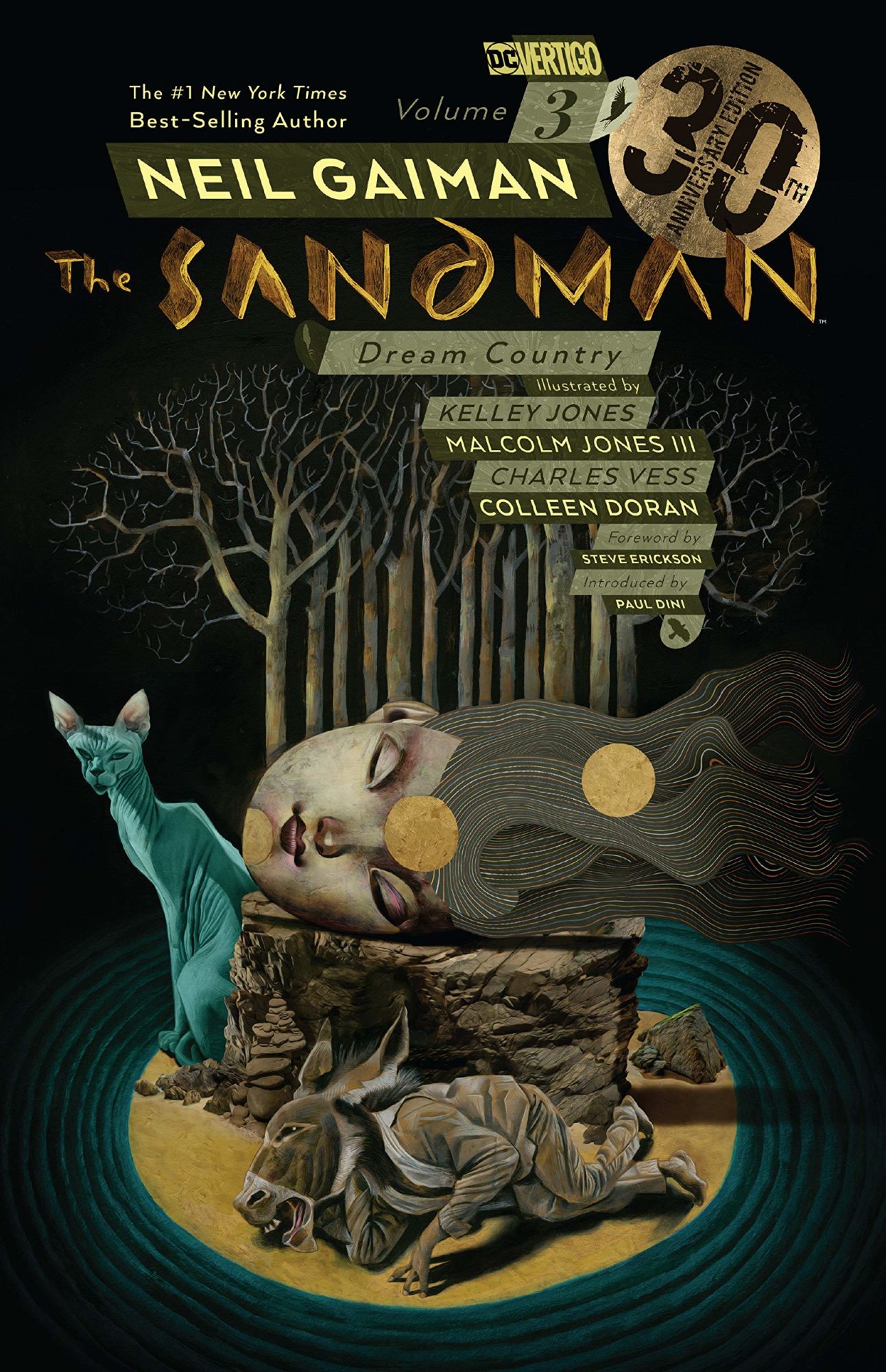
Dream Country – Calliope
In issue 17 – Calliope – we read as one of the Muses of Greek Mythology has been captive of a mortal human for decades. Not unlike Morpheus at the beginning of the series. Author Richard Madoc strikes a deal with the captor. In exchange for a bezoar he will get Calliope. Madoc quickly decides to rape Calliope as so doing will provide him with inspiration for his novel writing. Madoc quickly becomes successful and reneges on the promise he made Calliope – to set her free. Calliope tries to get help from three witches – the Furies – but they cannot intervene. It is Morpheus after having set himself free who comes to Calliope’s rescue, despite the two having had a failed romance. Morpheus punishes Madoc by giving him endless inspiration – which drives him mad.
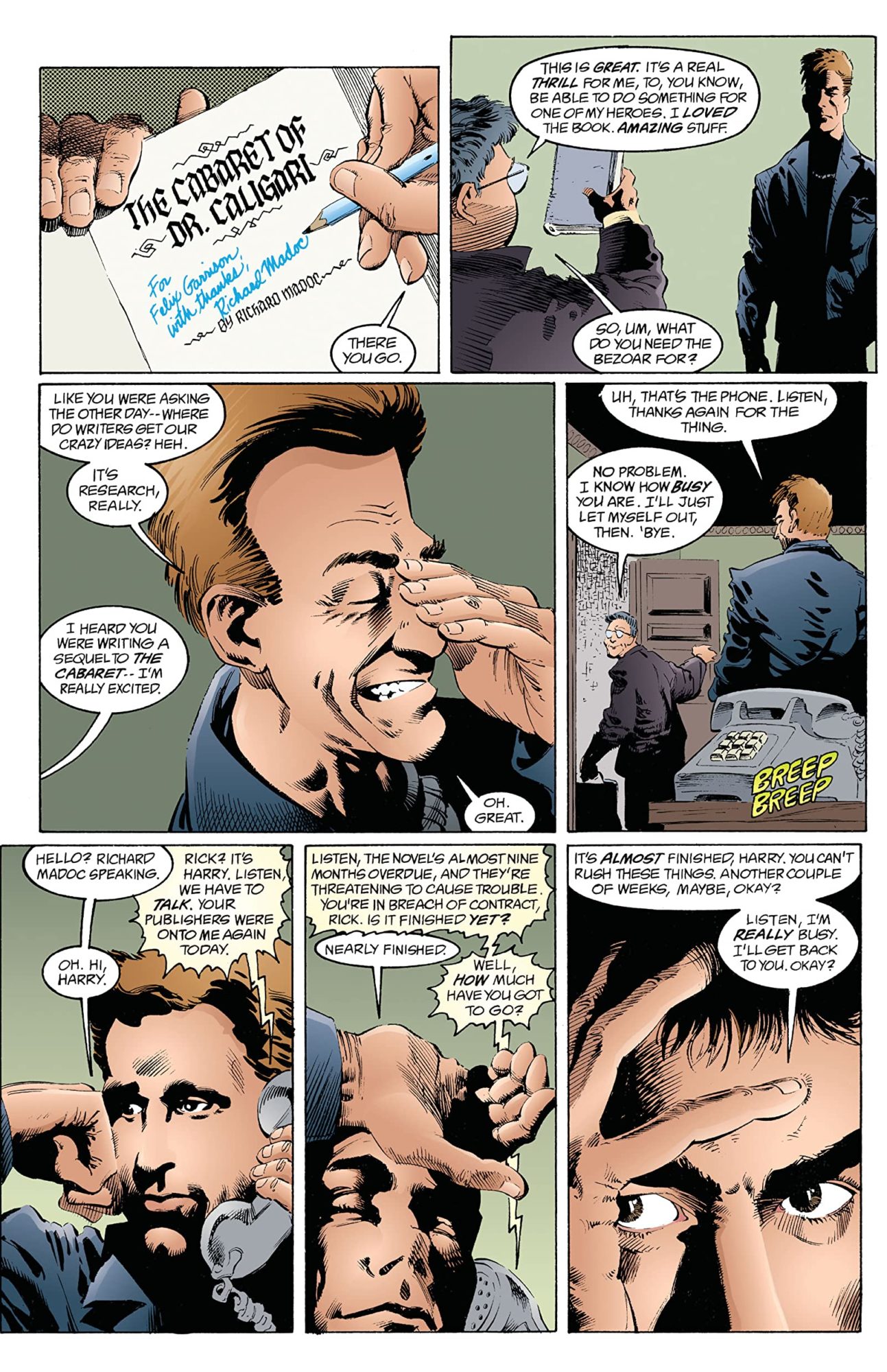
Issue 18 – A Dream of a Thousand Cats – is entirely told from the perspective of a cat. A little white cat goes to a secret cat-meeting to hear the history of how one cat was abused by her owners. Her litter was drowned and she decided to leave and discover why the humans did this. She meets Dream in cave who shows her an alternate reality in which humans are the playthings of cats. That world ceased to be when too many humans dreamed of change. This suggests that if enough cats dreamed of a different world they could also change it. The cat thus goes on a quest to speak to as many cats as possible and let them consider change.
A Midsummer Night’s Dream
Issue 19 – A Midsummer Night’s Dream – is very unusual. It depicts the premiere of William Shakespeare’s play A Midsummer Night’s Dream in the countryside. It is in fact Dream who commissioned Shakespeare’s troupe to come there. The audience consists of Faeries such as Titania, Auberon and many others. They are of course also characters in the play itself. Despite efforts for the fairies to not interfere with the play they do so anyway.
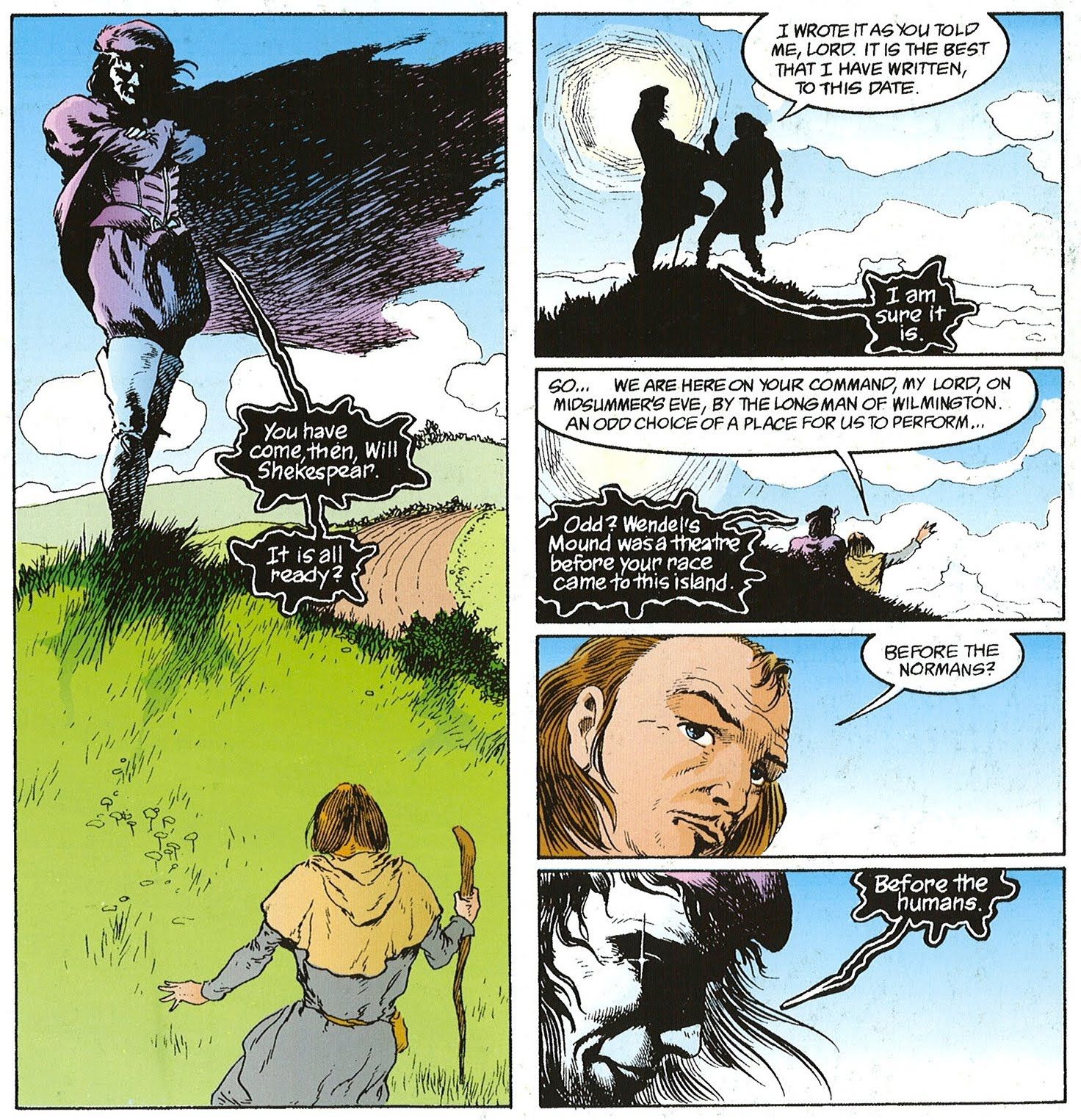
Puck ends up playing himself while Titania takes an interest in Shakespeare’s son Hamnet. The boy’s life is of course tragic as he only lived to be 11. This issue is well regarded by many, but I had to read it twice to understand it. Apparently it is meant to say that despite it being fiction it still represents reality – not unlike a dream. The archaic language – inspired by Shakespeare makes it hard to understand, but ultimately worthwhile.
Issue 20 – Façade – is a relatively short issue. It deals with a minor comic book character Element Girl whose real name is Urania Blackwell. She goes by the name of Rainie and might be considered a reluctant superhero. On instructions of the CIA she undergoes her metamorphosis, becoming immortal through the Egyptian sun god Ra. Sadly, Rainie also become reprehensibly disfigured. After her retirement she is stuck at home and dares not to leave. A depressed Rainie thinks of suicide after a spectacular failed dinner appointment. But as she cannot die this is a problem. And so we are once again belatedly introduced to Dream’s sister Death. The latter takes an interest in Rainie’s predicament and suggests that talking directly to Ra – speaking into the sun will help. It does, and Rainie turns to dust.
My opinion of Dream Country
This volume is again very different from the previous two. Author Neil Gaiman continues to write innovative new stories placing the reader in new settings with every turn of the page. This issues does mark some specific changes. There is more emotional manipulation of characters than open violence. It shows how Morpheus and his sister Death subtly manipulate humans (and cats) to further their own goals. And we are not certain what they are. In the case of Death it is to ensure everything eventually dies. Yet, it is not explained why Death took an interest in Rainie.
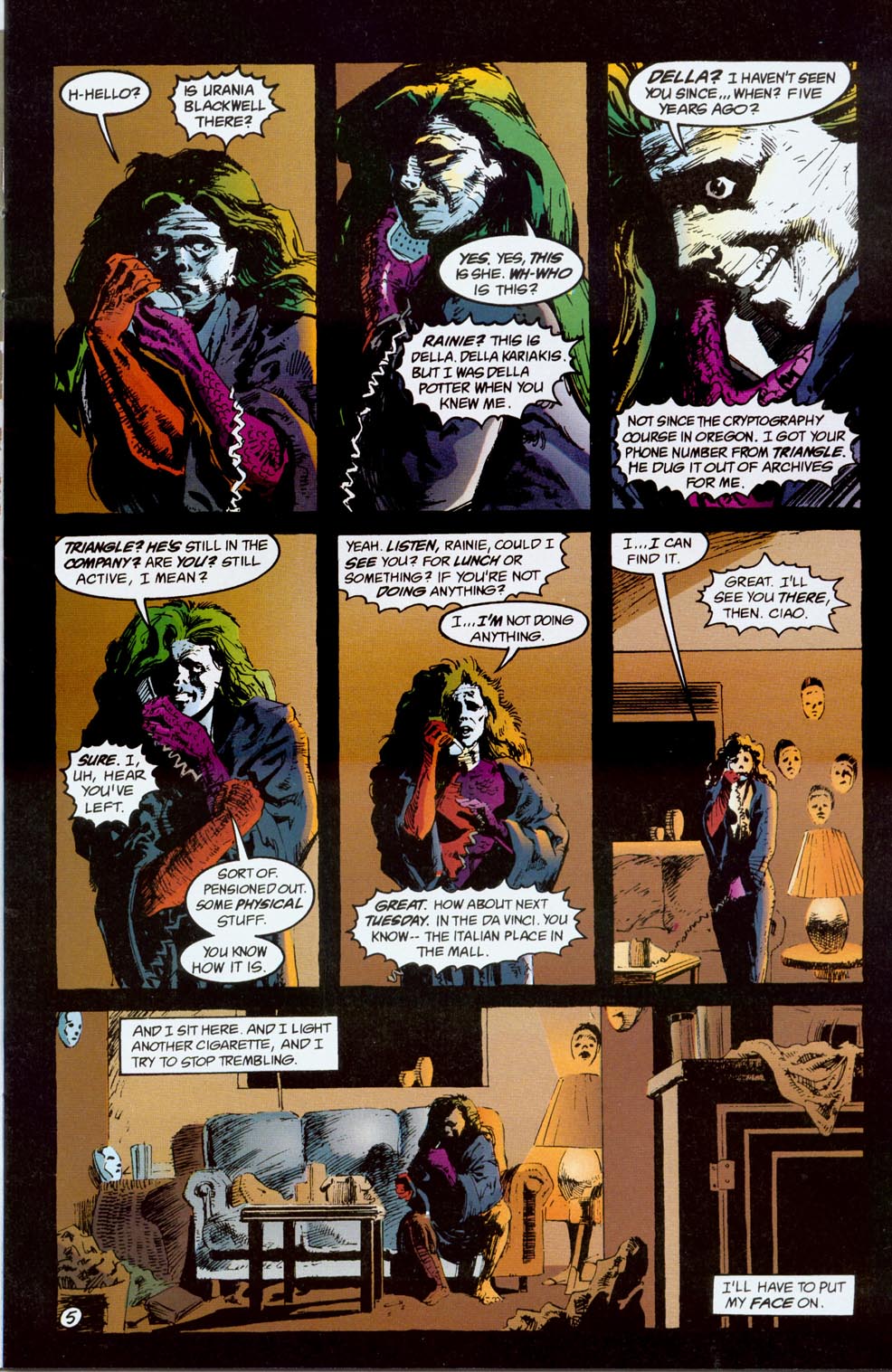
Morpheus himself only sparsely appears in this volume. It does not depict a journey as did Preludes and Nocturnes. Instead we see the consequences of human evil. The rape of Calliope, the murder of a litter of kitten and the desire to become a god. In each case Morpheus ups the ante and ensures the humans end up destroying themselves. At the same time this is still the same Morpheus we saw earlier. He has patience and is almost indolent, but also has a hard time forgiving. In the case of Calliope he saves her from her captor, but does not forgive her prior transgressions.
Dream Country is sadly all too quickly over, but I also believe it is easier to understand than Volume 2 – The Doll’s House. The drawings by Kelley Jones, Charles Vess and Colleen Dorn have come a long away since issue 1. Frankly the setting looks less dated. The inclusion of the original typed script at the end was an obvious way to flesh out this volume, but it does gives insight into the writing process. In a few weeks I will be reviewing Season of Mists which covers issues 21 to 28.
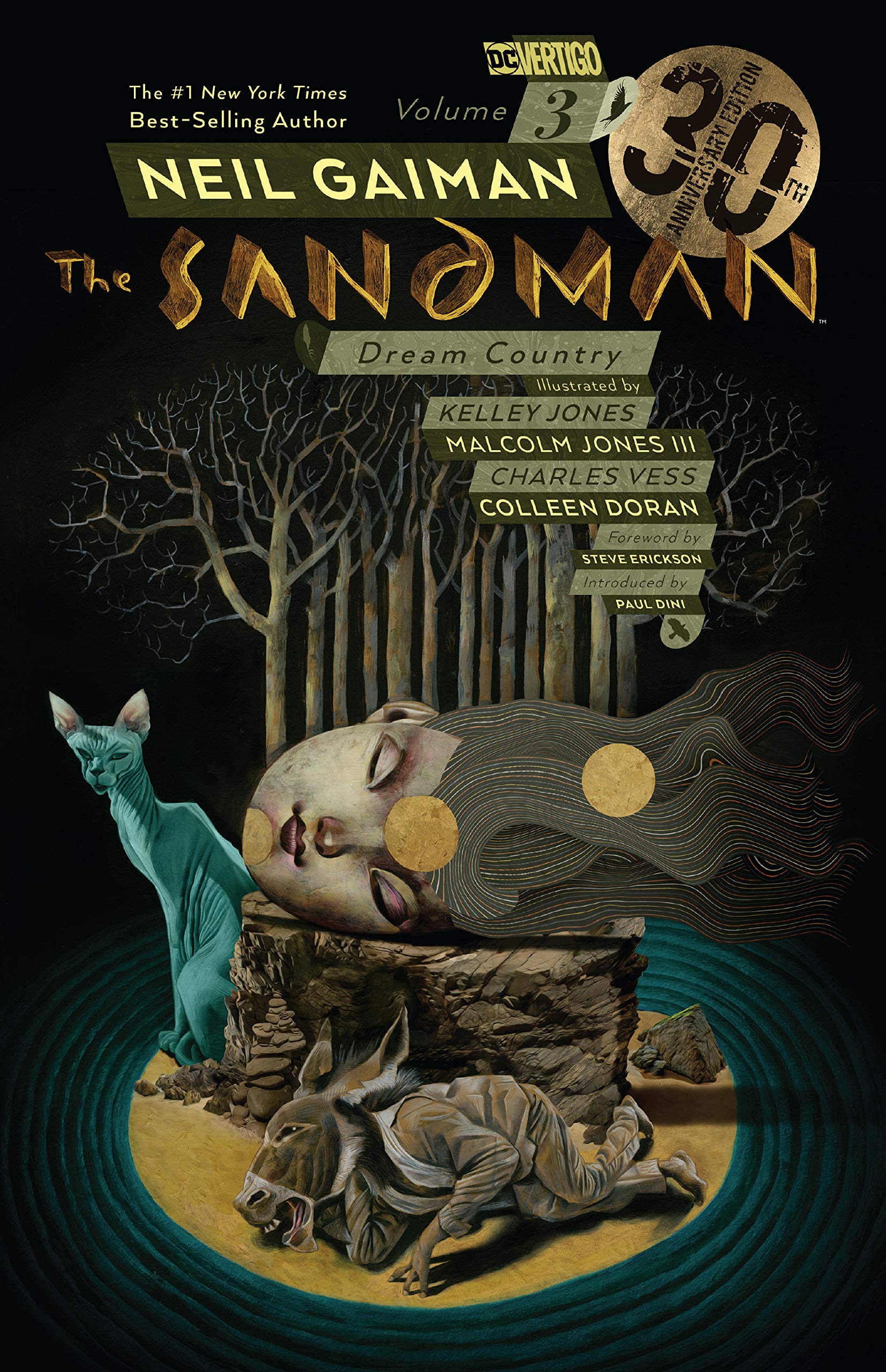



1 thought on “Review of The Sandman: Dream Country by Neil Gaiman”
Comments are closed.